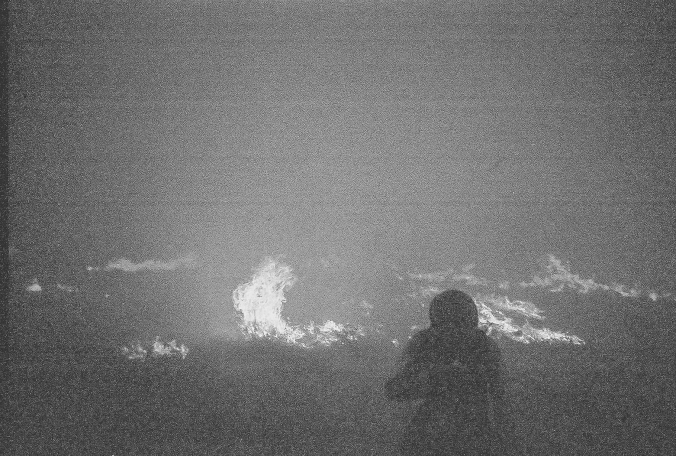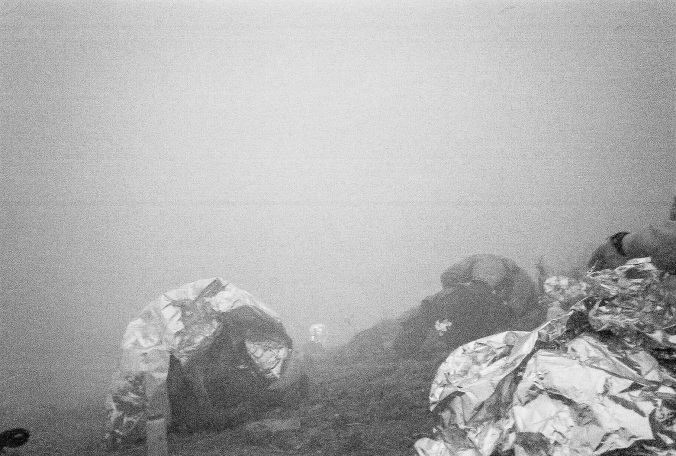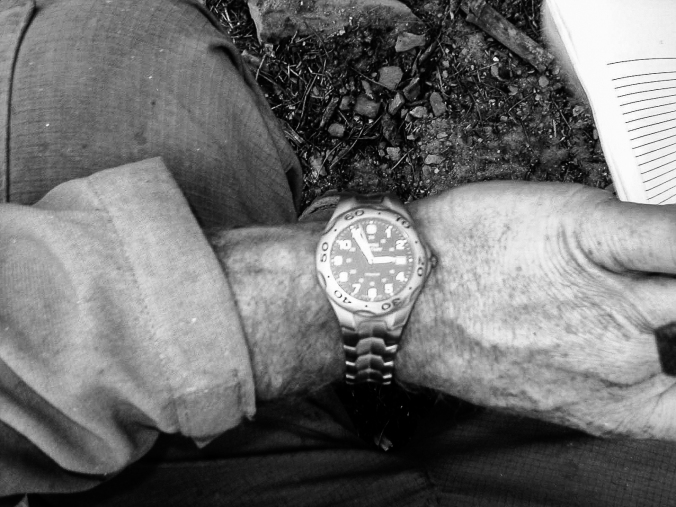“I try to cultivate relationships and build trust so I can create an environment where people feel safe telling me that my idea is a bad one.”
By Jayson Coil
Division Supervisor on the Nuttall Fire
When I reflect on the events surrounding the entrapment and subsequent shelter deployment on the Nuttall Fire there is one main lesson that continues to resonate with me. Along with this lesson comes the acknowledgement of the cost of this lesson.
When I refer to “cost,” I am not referring to the cost for me personally, but the impact the event had on others that day. Like any other fire, there are firefighters who depend on us (leaders) for their safety. This is not to say that individuals are not accountable for their own safety. But the actions that those of us in leadership positions advocate for can most certainly influence the risks that a firefighter faces. This is the “cost” I am referring to here.
A Potential Slow and Painful Death
For some of the people on H-4 that day, it was their first big fire. For them, it was not just smoky, it was the scariest thing they had ever experienced. For others, it was another one of too many close calls.
After this incident, some people left their careers for other professions. And, there may be other impacts to folks that I am unaware of.
The conditions that afternoon were bad. When the fire whirl crossed the helispot, it would have been a slow and painful death if anyone had inhaled those superheated gases.
I Would Be ‘That Guy’
I am certain somewhere in my own thoughts, along with the concern I felt for the other people, I was also troubled about the personal impact if we deployed our shelters. This was my Division. I would be “That Guy”.

Of course, I know it should not be that way. Such a concern should not influence one’s decision. However, I know that it can.
I try to remember the potential of a given consequence when I consider a course of action—to help myself remember that the actions you take early in an incident can impact your options days down the road. I find this sort of assessment beneficial because it prevents me from anchoring into false assumptions.
But if I minimize this incident’s impact on others, what message would I be sending?
I Wanted the Plan to Work
So, what did I learn on July 2, 2004?

I learned—and I have attempted to remind myself of this on every subsequent incident—that the effort you put into a plan and its implementation should not taint your assessment of risk on a given day.
Many people had worked hard on that line. They were invested. I was invested. I had just arrived at the lookout when everything started to pick up. I am thankful for the leadership many provided that day.
I do not look at this incident with the notion of how I could have changed things that day. Rather, I look at it from the perspective that I was invested more in that line because it was mine and because of the hard work crews had put into constructing it. I wanted the plan to work. I wanted the line to hold.
I felt accountable for the slopover. It was my Division. So, I wanted it fixed and the line to hold.
However, I would suggest that this is the wrong way to look at it. We deal with uncertainty and variables outside our control all the time. Often, these variables lead to unintended consequences. Today, I try really hard to recognize that and continue to reassess the quality of information I have received.
I try to declare my biases and invite others to challenge my assumptions. I want them to help me calibrate because I know self-assessment is not the solution. I try to cultivate relationships and build trust so I can create an environment where people feel safe telling me that my idea is a bad one. From my perspective, that is essential to effective leadership.





Leadership, is important to all!
However boots on the ground must take an except some of their own importance to their own safety!
Safety is not the total responsibility of “Leadership” alone, “Safety” is an individual responsibility also!
Too many times in “Wild Land” burn over situations, (Excuse and Fault) become the name of the incident!
There is no way to keep human life completely safe in the face of “wild land fires“! With one exception that being “don’t be there”! Which I see as no exception! For if You or I were not there someone else with less experience, less safety knowledge, less zeal in doing their part to COMFRONT MOTHER NATURE would be there! Attempting to do the job intended for “Human Fire Fighting Machines” with a purpose and goal!
Purpose – Be there, do the job, SAFELY! RETURN HOME to live and love in this world we all fight wild fires to PRESERVE! WHO”S responsible for Your Safety on wild land fires? Answer: EVERYONE, every one in command, support and attack! When you leave someone out, it is no longer “SAFE”! I say “Keep Your Head in the fight”! For the book answer is not always the answer to get You SAFELY home!
The number one rule should be to “keep Your head in the fight”! Right beside “One foot in the burn and the other in the green! May God Bless each and every firefighter out there!
LikeLike
I recently ramped up my study of workplace atmosphere (or “command climate”). As I’ve shared this topic around my workplace, I’ve been amazed at the interest it generates. And there it is again in this blog: “I try to cultivate relationships and build trust so I can create an environment where people feel safe telling me that my idea is a bad one.” I’m grateful it’s a topic within this Week of Remembrance. I hope we’re all (wildland firefighting, all-hazard public safety, and emergency management) really good at maintaining healthy workplace atmospheres. For my part, I’m trying to focus on what I can control, and that is to make sure that to the degree it depends on me and within my sphere of influence, we’re getting to being the best we can be at it. Given all the interest I’ve seen in this, and the consequences of failure, it looks to me to be worthy of getting it right every day.
LikeLike
Thank you for this insightful piece. The best field leaders I’ve encountered over the years echo your thoughtful humility. It’s more work to make connections and solicit feedback from the troops. It may require putting ego aside for the good of the order. But the dividends are invaluable.
LikeLike
The Rogue River Hotshots gave me input, when I was a fresh Division Supervisor! Some people might get offended by this, I did not! I sought out input, we as a culture do get ideas stuck in our head, we have to realize that a line drawn on a map is just a pen stroke and we need to have plan A, B , and C if shit hits the fan! I encourage input and so should others, it creates an enviroment of trust and exceptance as a group. The firefight is not one person, but a group of ideas and and more eyes to see what one person may miss! I am not an armchair Quarterback and think this and other events were like a piece og swiss cheese. There may have been a group think that had flawed holes in everyones piece of cheese! When the holes line up, they become one big problem! I agree that everyone should be aware of what’s happening around them and say something if they know it’s going to shit, or has the potential to be a bad situation! I try to think shit is going to go wrong and add scenarios based in that. What happened sucks for sure, but all of us at whatever level can learn from this situation, and others! We need to teach people it is not who is tougher and follow them blindly. We need to speak up, at all levels without reprocussudions. Everyone on a division , or any other fire is responsible for safety! We try to teach that, but sometimes the toughness of firefighters takes over and they don’t speak up or they think they will be seen as the weak link in a chain of events. We need to train every resource, it is okay to ask questions and speak up without this tough shell that is built around them or the crew they are with! I had a hotshot supervisor once that would say I just want to see assholes and elbows. He was setting up resources to be tough and not question his authority, we need to make sure these people understand they don’t make all the decisions for 19 people. Yes we need to work hard, but we also need to work smarter! Just my input!
Elizabeth Castleberry past hotshot, T2 firefighter, T2 PNW trainee for an IC position, Deputy Fire Staff Officer, now retired!
Email= ecastleberry58@gmail.com
LikeLike
We all have or will have errors in our judgment and we hope those errors won’t be at a critical juncture. The best we can do is minimize the amount of errors through training, education, experience and LISTENING! To compound our errors by committing more errors in any situation skirts disaster. A well written article! Safety over Pride is difficult when it shouldn’t be.
LikeLike
Pingback: When You’re the Division Supervisor and Fire Shelters Come Out – Site Title
Whart does he mean by “I would be that guy? I was also troubled about the personal impact if we deployed our shelters. This was my Division. I would be “That Guy”. Of course, I know it should not be that way. Such a concern should not influence one’s decision. However, I know that it can. XXXXXXIs he saying there is a stigma for deploying your shelters. OR Did he feel like a failure because he had to drop the line they work so hold
LikeLike